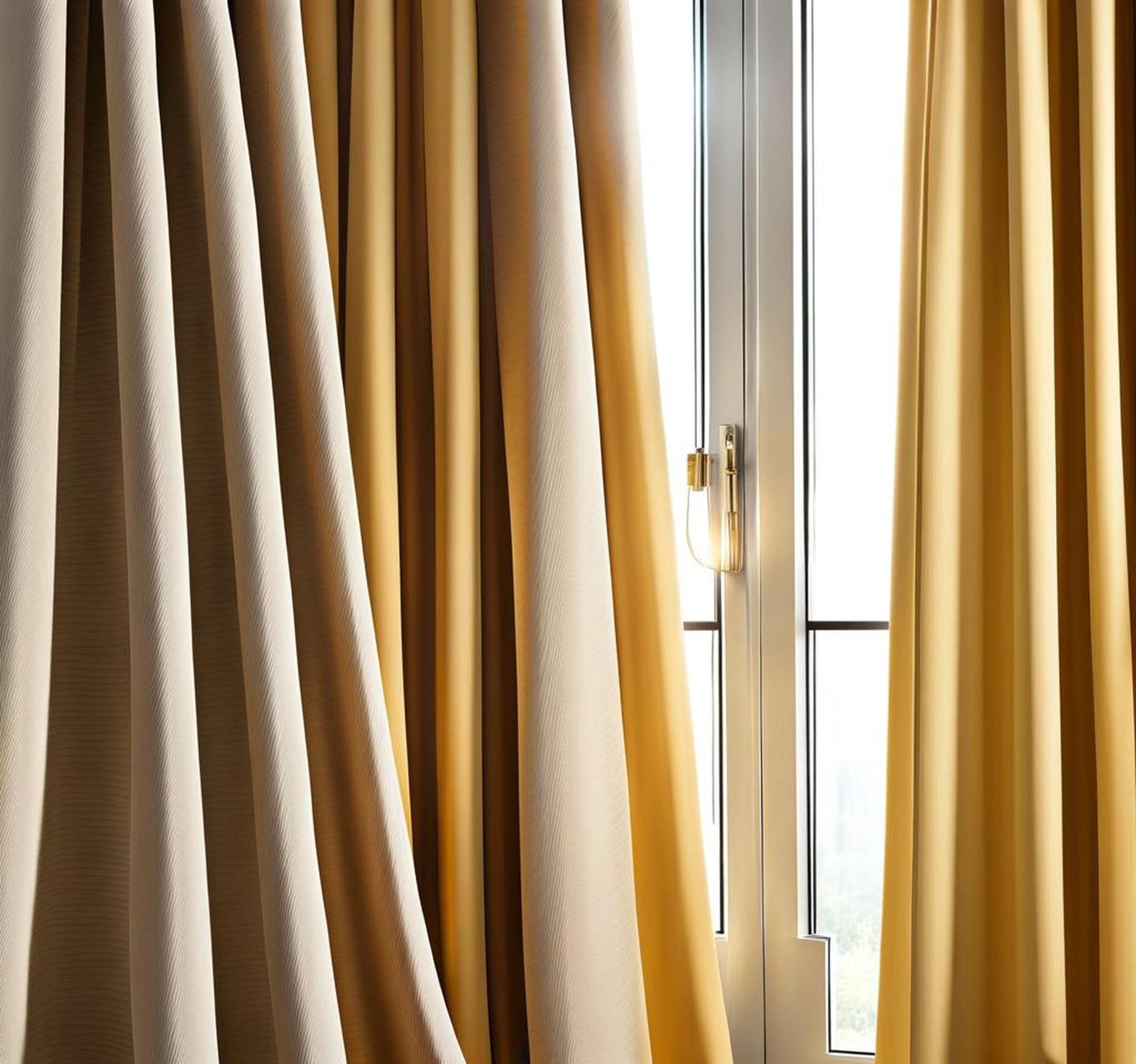When it comes to window treatments, one of the most common decisions is whether to install light filtering or sheer curtains. Both offer distinct benefits in terms of aesthetics, privacy, insulation, and managing natural light in a space. But with so many differences, it can be tricky to decide which is best suited for your needs.
We’ll cover everything from fabric density, to use cases for bedrooms versus living spaces, to complementary pairings with other window coverings. Let’s dive in!
Defining Light Filtering vs Sheer Curtains
Light Filtering Curtains
As the name implies, light filtering curtains are designed to filter and block light from penetrating into a room, while still enabling you to see outside during the daytime. They feature a very tightly woven fabric, usually made from heavier materials like velvet, brocade, faux silk, cotton, linen blends, or thick polyester blends.
In addition to managing light, these thick light filtering curtains provide excellent insulation . The dense weave helps trap heat in during cold winters. It also blocks intense sunlight and heat from radiating in and heating up indoor spaces in warmer months. This insulation ability makes them quite energy efficient. Lastly, the opacity inherent to these curtains enables increased privacy day and night.
Sheer Curtains
Sheer curtains have an airy, delicate aesthetic created from lightweight translucent fabrics. Common fabrics choices include silk, cotton voile, sheer polyester, linen, lace, or nylon. As the thin fabric allows daylight to shine through, rooms maintain brightness and visibility. Sheers curtain can provide minor insulation and a small degree of privacy, however they pale in comparison to light filtering counterparts when it comes to these functions.
Key Differences
Now that we’ve distinguished the core qualities of light filtering versus sheer curtains, let’s hone in on some of the major differences between the two most salient to consumers.
Privacy Level
For those wanting to closely regulate privacy day and night, light filtering curtains are the clear winner. The thick opaque fabric prevents people from seeing inside rooms. Sheer curtains meanwhile allow for partial visibility, so they shouldn’t be used if full privacy is a priority.

Light Blocking Abilities
Light filtering curtains absorb almost all incoming light, making rooms nearly blackout dark. Sheers meanwhile allow a fair amount of light through during daylight hours. For bedrooms or media rooms where near complete darkness is necessary, light filtering curtains deliver.
Insulation Properties
Insulating rooms from cold and heat is where light filtering curtains excel. Their dense weaves buffer indoor spaces extraordinarily well year-round. Sheer curtains provide a nominal level of insulation at best.
Aesthetics
Both curtain types enable unique aesthetics, which largely depends on the fabric patterning and textures selected. However in general, light filtering curtains create private, cozy atmospheres. Sheer curtains cultivate bright, airy, elegant spaces.
Use Case Scenarios
Now that we understand the core differences, let’s explore ideal use cases to determine which curtains pair best with specific rooms.
Bedrooms
For bedrooms, light filtering curtains deliver on every front. Their opaque, insulating qualities allow you to achieve pitch darkness for uninterrupted sleep. Blackout environments help regulate melatonin and sleep cycles. Thick light blocking curtains also enable you to freely change at night and in the mornings while maintaining privacy.
Living Spaces
Sheer curtains beautifully complement living rooms, dining spaces, kitchens, and dens. During daylight hours, sheers prevent complete visibility while still allowing light to fill the room. The translucent fabrics create bright, welcoming spaces for lounging and entertaining. When drawn fully closed in the evenings, they enable some visibility while maintaining a fair level of privacy.
Home Office Spaces
In home offices, either light filtering or sheer curtains could work well depending on the amount of natural light and privacy desired. For night owls working late into dark hours, light filtering curtains maintain privacy while blocking distracting light pollution from outside. Sheers meanwhile enable brightness for daytime work hours while allowing some visibility outwards.
Children’s Rooms
For younger kids’ bedrooms where naps are a regular occurrence, light filtering blackout curtains enable darker environments conducive to sleeping at odd hours. In children’s rooms where playtime is the priority, sheer curtains add a fun, whimsical aesthetic while allowing plentiful natural light.
Additional Considerations
Beyond addressing privacy, light management and insulation, below are some secondary factors to weigh when deciding between light filtering and sheer curtains.
Noise Reduction
Thick light filtering curtains provide nominal noise reduction by creating an added barrier between window panes and interior spaces. With less material density, sheer curtains allow more sound transmission.
Easy Cleaning
Due to the lighter, smoother material, keeping sheer curtains looking pristine with frequent cleaning is achievable. Light filtering curtains meanwhile require a bit more tedious upkeep to keep their thicker fabrics looking flawless.
Cost Differences
Often made from higher quality designer fabrics and requiring more material to create opacity, light filtering curtains come with a higher price tag. Standard shear curtains cost notably less.
Layering with Other Window Treatments
Sheer curtains uniquely work as an excellent overlay to soften blinds and shades. The breezy, delicate fabric creates an elegant layered look. Light filtering curtains can feels excessively heavyweight when paired with other dense window coverings.
At the end of the day, choosing between light filtering or sheer curtains comes down to personal preference for the amount of desired daylight, visibility, and style you want to achieve. Assess your privacy and insulation needs. Take into account how the curtains will complement the room’s existing palette and textures. Consider supplemental window treatments for adding dimension. And lastly, factor in your budget constraints. Once these practicalities are weighed, you’ll be on your way to determining the right sheer versus light filtering curtains to gracefully dress your windows.
